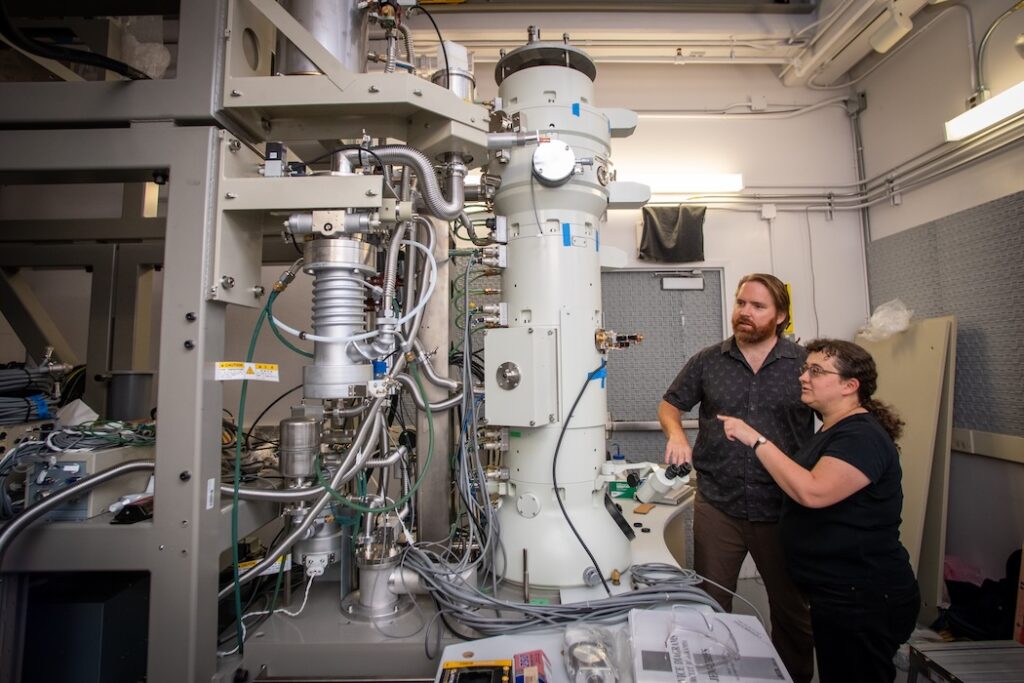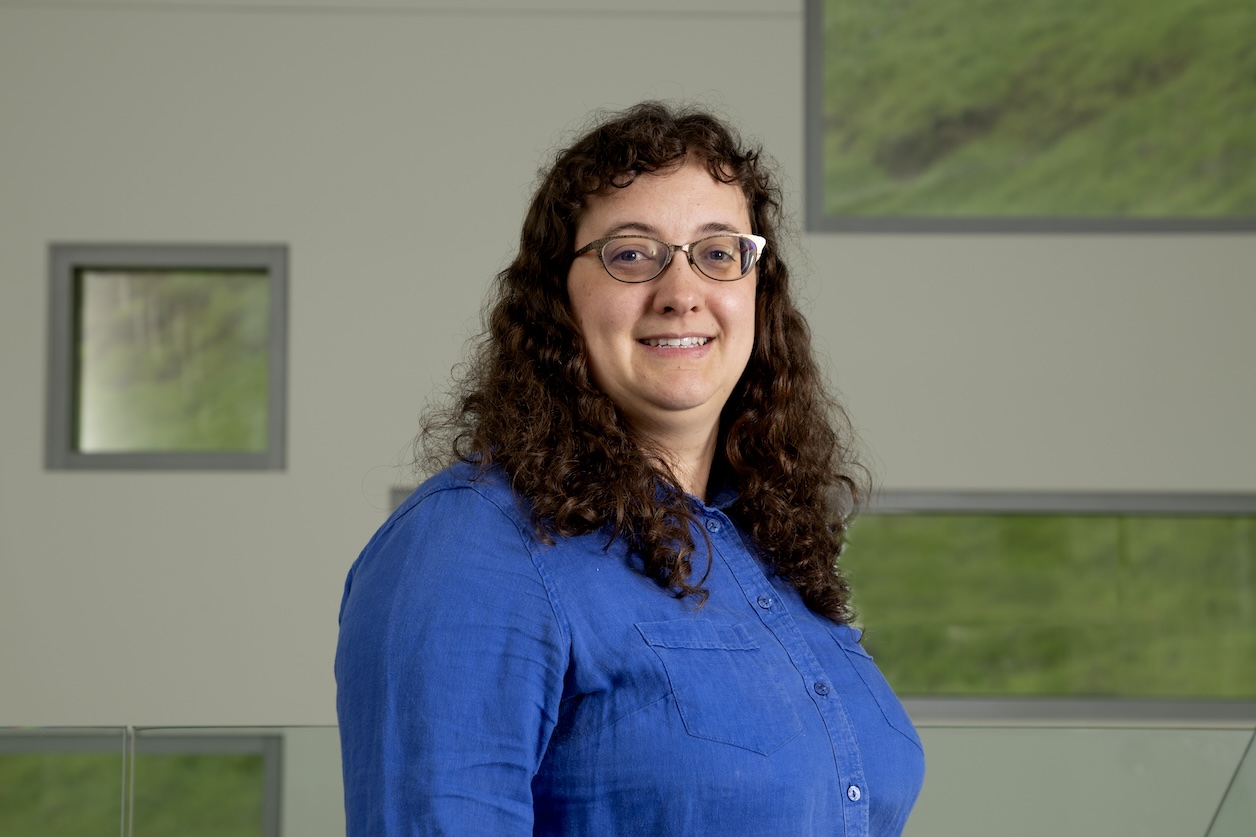Karen Davies was born in England and was musically inclined from a very young age. As a child, she was an avid swimmer and passionate about science. She earned her bachelor’s degree, with honors, in biological sciences at St. John’s College at Oxford University, where she interrogated how the structure of the dragline silk of the golden orb weaving spider contributed to its strength. Davies stayed on at St. John’s College for her doctoral studies in molecular biophysics. For her thesis work, she investigated the structure of the response regulator protein HupR found in the photosynthetic bacterium Rhodobacter capsulatus.
In 2007, Davies moved to the Max Planck Institute of Biophysics in Frankfurt, Germany, for her postdoctoral research in the bioenergetics field, during which she contributed to the fundamental understanding of ATP synthase and respiratory supercomplexes. She was recruited to the Molecular Biophysics and Integrated Bioimaging (MBIB) Division to continue her groundbreaking research using electron cryo-tomography to study the photosynthetic complex I (also known as photosystem I), β-carboxysome shells, and bacteriophages. Her colleague Bob Glaeser recalled, “Karen had a big vision of how electron microscopy, in combination with light microscopy, could be used to better understand how biology works. She worked tirelessly to realize her objectives.”

Davies distinguished herself early on in her tenure at Berkeley Lab. She was one of two scientists chosen to represent the Lab at the 2016 World Economic Forum Annual Meeting of New Champions. She was selected for this prestigious honor because she exhibited exceptional creativity, thought leadership, and high growth potential in her work. “Karen loved to present her work and ideas at scientific meetings, and she was often invited to do so, even though only a very junior investigator,” said Glaeser.
She was also an awardee of the highly competitive Department of Energy Basic Energy Sciences Early Career Research Program. That particular research focus was on the NADH dehydrogenase-like complex, which is known to help regulate the phase of photosynthesis where the energy of sunlight is captured and stored in two types of cellular energy molecules. These energy molecules are later utilized to power the conversion of carbon dioxide into sugar. “We were very proud of her achievement and we talked about many new ideas,” reflected MBIB Division Director Junko Yano.
After five years in Berkeley, Davies moved to the Diamond Light Source, where she was a principal electron microscopy scientist at electron Bio-Imaging Centre, the UK’s national cryoEM user facility. She also had an independent research group at the Research Complex, Harwell. “While we respected her decision to go back to the UK, we were very sad to lose her and we talked about how to continue our collaboration,” said Yano.
The return to England allowed Davies to be nearer to her family. “She was very close to them, especially her mother, with whom she spoke every day while living in the U.S.,” Nathalie Elisabeth, a former MBIB colleague, shared. “She was excited about having bought a new house in the UK that she was renovating with help from her family.”
Yano remarked, “I always remember how enthusiastic Karen was about her work. Everyone has their good and challenging days, but seeing her smile when she talked about her projects always made me uplifted.”
A memorial service was held for Davies on Monday, March 17, at the Chester Crematorium in the UK. If desired, contributions can be made to the British Science Association in her memory.




